Age: Middle Silurian
Three gorgeous dolostone boulders were donated by Lafarge Canada Inc., and the Oxford County Geological Society. All three dolostone boulders possess fascinating calcite groupings. A special thank you is due to Tim Elliott for kindly transporting the rocks from Dundas Quarry, to the Peter Russell Rock Garden.
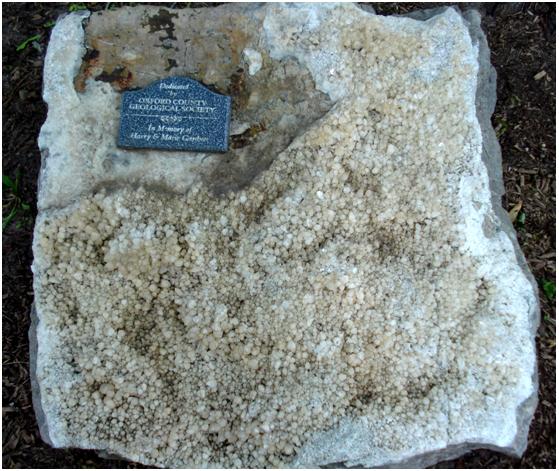
A photo of the Lockport dolostone with calcite crystals formed in a large cavity in the dolostone.
The rocks were donated in memory of Harry and Marie Gardner, two dedicated members of Kitchener and Waterloo Gem and Mineral Club as well as Oxford County Geological Society for many years. Harry and Marie had an impressive collection of minerals from Southern Ontario including a number from the Dundas Quarry.
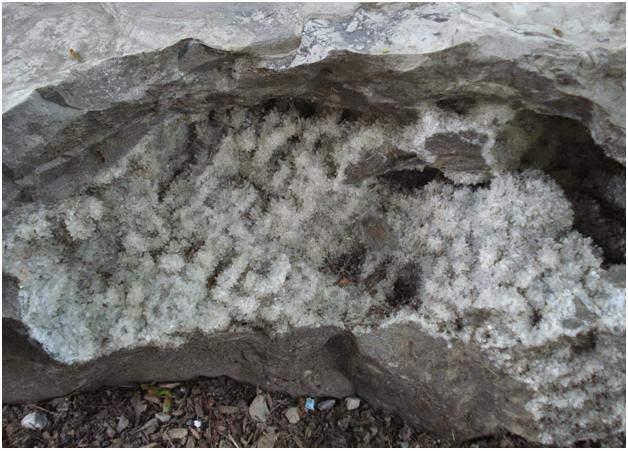
A photo of Lockport dolostone with calcite crystals in a large void.
The Dundas Quarry has been in operation for over 140 years and is currently working sedimentary rocks of the Lockport Formation of middle Silurian age (about 425 million years). The principal product being produced is dolostone, a calcium magnesium rich sedimentary rock. Dolostone is often used as gravel on paths and driveways, for concrete aggregate, or as a flux stone for the steel industry. This quarry is Ontario’s largest and has produced over 1 million tons of crushed stone.
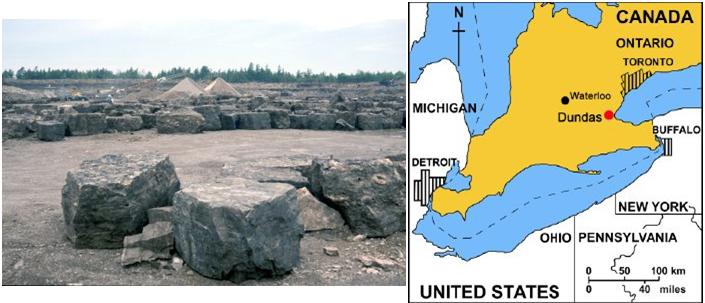
The dolostone formation process began when calcareous sediments accumulated on the sea bed. A combination of seawater as well as burial caused the fluids to percolate through the sediments, turning them into limestone. During continual burial of the limestone, magnesium rich fluids transformed the limestone into dolostone. This process can often cause cavities or pores to form. These pores may then be filled with new crystals of a different mineral, such as calcite. Fossils are also frequently well-preserved in these rocks.
Common minerals which may be found in the Dundas Quarry include:
- Celestine: the source of strontium used in fireworks and sugar beet refining.
- Calcite: may be found in large crystals, also known as "Dog Tooth Spar."
- Galena: the main ore of lead.
- Marcasite: a greenish or yellow brown metallic iron sulphide.
- Sphalerite: the principle ore of zinc.
- Fluorite
Deposits of lead and zinc sulphides (sphalerite and galena) may be linked to regional scale metamorphism which resulted from plate tectonics. As well, sphalerite, pyrite, and marcasite may have been produced by picking up zinc, lead and iron as chlorites together with hydrocarbons. These minerals commonly collect in voids in the dolostone.
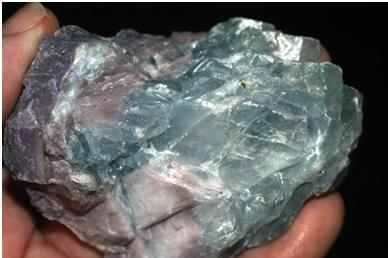
Celestine from Dundas Quarry.
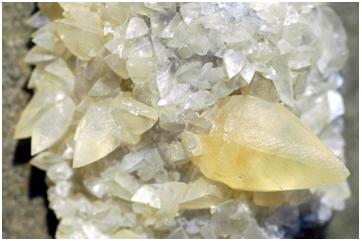
Calcite (Dogtooth Spar) from Dundas Quarry.
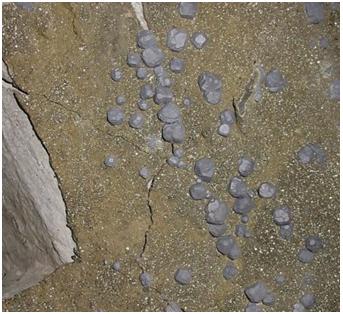
Galena on marcasite from Dundas Quarry.
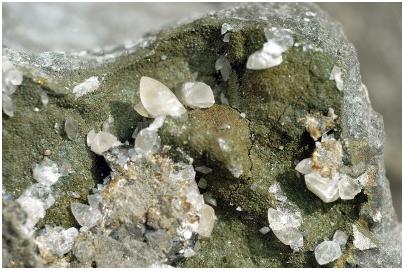
Sphalerite and Calcite, lining the voids in the dolostone from Dundas Quarry.